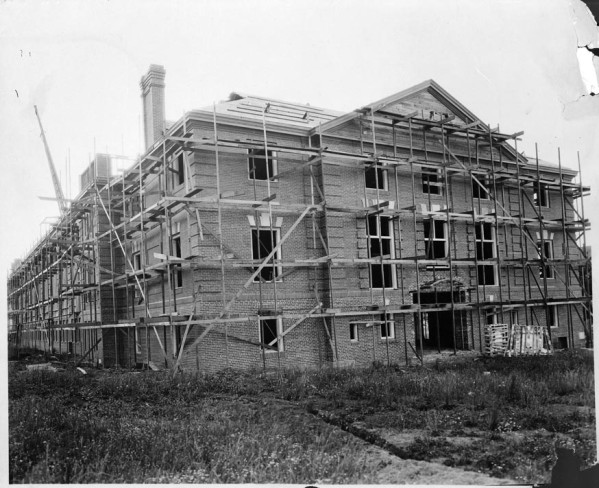Housing Opportunity
 Gerlinger Hall, built in 1921 and originally named the Women’s Building, represents the heritage and growth of women’s athletics at Oregon. It was the second designated women’s facility on campus. The first building for women students, Mary Spiller Hall, was completed in 1917 with the assistance of the state legislature.
Gerlinger Hall, built in 1921 and originally named the Women’s Building, represents the heritage and growth of women’s athletics at Oregon. It was the second designated women’s facility on campus. The first building for women students, Mary Spiller Hall, was completed in 1917 with the assistance of the state legislature.
Beginning in 1913, Miss Ruth Guppy, Dean of Women at the University of Oregon, spearheaded the initial drive to raise funds for the Women’s Building to address the lack of athletic accommodations for women on campus. At the time, women used the gymnasium that had been constructed in 1881. The building was decaying and did not meet the needs of the growing number of women interested in athletics. Additionally, from 1877 to 1918, the enrollment of females at Oregon increased from 38 to 629, an obvious indicator of the need for more facilities for women.
Shortly after Guppy began her initiative to raise funds, Irene Hazard Gerlinger, the first woman Regent at the University (1914-1929), stepped in to help. Together, they raised nearly $17,000 by 1918. Efforts, such as selling bricks for the building and holding society benefits, contributed to the drive. Realizing that the funds were still substantially less than the estimated $200,000 the new building required, they made a pitch to the Oregon legislature, resulting in state allocations to the 1919, 1920, and 1921 budget periods. The building was finally completed in 1921. The new building aimed to serve as quarters for physical activity and training for women and to provide a suitable area for social gatherings and functions for the entire University.
Renamed Gerlinger Hall in 1929, the facility continued to serve as an integral asset to athletics on campus well into the late 20th century. When women’s intercollegiate basketball and volleyball took off in the late 1960s, the gymnasium housed their first games. Although today the facility primarily houses intramural activities, dance courses, and club sports, it still maintains its image as a prominent landmark of women’s athletic progress on campus.